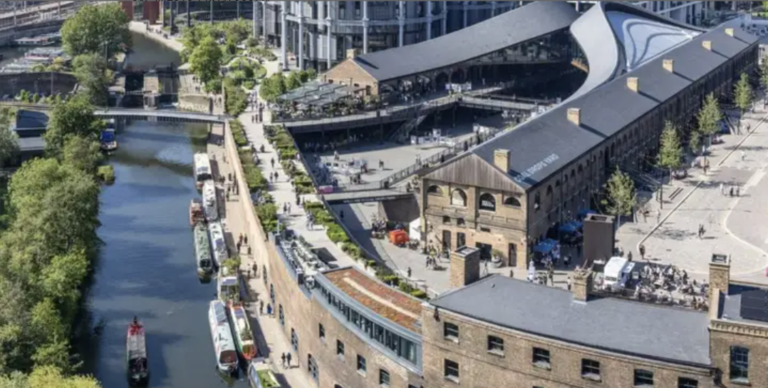I think your blog has emphasized the importance of re-planning and transforming outdated railway infrastructure to optimize urban layouts and improve connectivity, economic vitality, and quality of life for residents. Constructions in the era of industrialization have become obsolete in the city. Many of them were not properly treated and abandoned by humans. These places become abandoned spaces and cause negative impacts in the city. However, this is also an opportunity to improve the quality of the urban environment and the welfare of residents. These structures can become new public spaces, contributing to promoting sustainability, social and cultural revitalization and local economic development.
The case studies you give are remarkable. They illustrated how repurposing rail space into parks, malls and public amenities can spur economic development, increase green space and promote community engagement. By leveraging innovative design and preserving industrial heritage, these initiatives showcase the potential for urban railway area redevelopment to serve as a catalyst for urban regeneration and socio-economic growth.
References:
Azhar, J. , Gjerde, M. , Vale, B. (2020). Re-imagining Urban Leftover Spaces. Available at: https://www.researchgate.net/publication/341299481_Re-imagining_Urban_Leftover_Spaces. (Accessed: 20 May 2024)
Renewal of Urban Railway Area
Urban railways were conducive to improving the transport capacity of cities in the past, but they are somewhat outdated in modern times. The re-planning of a railway infrastructure is, thus, an effective and important investment in shaping urban fabric and layout. Such reorganization intends to create the best urban plan. This transformation improves the city’s layout. Hence, it also is the cause of the enhancement of urban living. Besides, it works to stimulate the economy of the town as well.
From Freight to Park: The High Line Transformation in Manhattan
In the case of the West Side Rail Yard in Manhattan, New York City, for example, the transformation of the area, High Line Park, is an example of urban railway transformation. Originally used as a freight railway, the elevated line was transformed in 2009 into an elevated park that has become a popular public recreational space for city residents. This project increased green space. It also promoted commercial and residential development in the surrounding area. As a result, the economic value of the area and the cityscape was greatly enhanced.Related studies have shown that the establishment of a highline park enhances urban connectivity and raises property values in the surrounding area (David & Hammond,2011).

Figure 1:The railway tracks are preserved as a landscape.
King’s Cross Revitalization: A European Success Story
In Europe, the revival of the territory adjacent to London King’s Cross train station is a well known successful case study. The implementation of the project, however, isn’t limited to office spaces, housing, and the public areas only; but it also includes a number of commercial facilities as well. It is what sets the area apart from the rest, it became from clutter to development. Previously, it became a chaotic condition. The developments of a shopping center in the area were some of the most noticeable changes. Now, the center has many business establishments, restaurants, and cafe, which collectively make an impressive image.Amazingly, the industrial design, reflected in the streets and park facilities’ names, has remained intact, as if time has stopped and everything is still in working order.
Therefore, the development of King’s Cross districts represents a world-class example of urban labor. It improves physical infrastructure and enhances the city’s reputation.Also, it has boosted the capacity and the ease which public transport evolves (Johnson, 2015).

Figure 2:Heatherwick Studio
Redevelopment of railway areas can lead to urban regeneration, transforming underutilised land into vibrant functional spaces that contribute to the economic and social fabric of the city (Hindawi,2023)From these examples and studies, it is clear that the transformation of urban railway areas not only improves the functionality and aesthetics of the city, but also leads to the economic development of the surrounding areas and improves the quality of life of the residents. By creatively reusing urban space, these projects demonstrate the potential and importance of railway area regeneration.
Reference:
David, J. & Hammond, R. (2011). The High Line: The inside story of New York City’s park in the sky. Farrar, Straus and Giroux.
Johnson, L. (2015). “Regeneration of King’s Cross: A railway heritage to contemporary urban quarters.” Urban Studies, vol. 52, no. 12, pp. 2134-2150.
Case of a Newly Built Railway Line in Gdańsk (Poland)’, 2023, Hindawi, available at: www.hindawi.com [Accessed 19 May 2024].
Bertolini, L. and Spit, T., 1998. Cities on Rails: The Redevelopment of Railway Station Areas. London; New York: E & FN Spon.



I think your blog has emphasized the importance of re-planning and transforming outdated railway infrastructure to optimize urban layouts and improve connectivity, economic vitality, and quality of life for residents. Constructions in the era of industrialization have become obsolete in the city. Many of them were not properly treated and abandoned by humans. These places become abandoned spaces and cause negative impacts in the city. However, this is also an opportunity to improve the quality of the urban environment and the welfare of residents. These structures can become new public spaces, contributing to promoting sustainability, social and cultural revitalization and local economic development.
The case studies you give are remarkable. They illustrated how repurposing rail space into parks, malls and public amenities can spur economic development, increase green space and promote community engagement. By leveraging innovative design and preserving industrial heritage, these initiatives showcase the potential for urban railway area redevelopment to serve as a catalyst for urban regeneration and socio-economic growth.
References:
Azhar, J. , Gjerde, M. , Vale, B. (2020). Re-imagining Urban Leftover Spaces. Available at: https://www.researchgate.net/publication/341299481_Re-imagining_Urban_Leftover_Spaces. (Accessed: 20 May 2024)